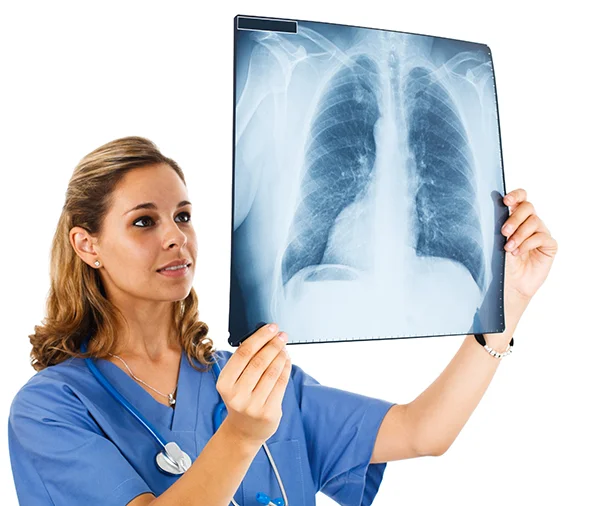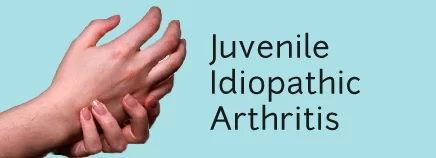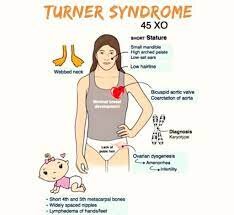Emphysema
Table of Contents
What is emphysema?
- Emphysema is a lung situation that causes shortness of breath. In people with emphysema, the air pouch in the lungs (alveoli) is damaged. Over time, the inner walls of the air pouch weaken and rupture — creating larger air spaces instead of many small ones. This decreases the surface area of the lungs and, in turn, the amount of oxygen that reaches your bloodstream.
- When you exhale, the damaged alveoli do not work properly and old air becomes trapped, leaving no room for fresh, oxygen-rich air to enter.
- Most people with emphysema have chronic bronchitis. Chronic bronchitis is inflammation of the tubes that carry air to your lungs (bronchial tubes), which conducts in a persistent cough.
- Emphysema and chronic bronchitis are 2 conditions that make up chronic obstructive pulmonary disease (COPD). Smoking is the leading situation of chronic obstructive pulmonary disease COPD. Treatment may slow the progression of chronic obstructive pulmonary disease COPD, but it can not reverse the damage.
- Emphysema is a disease of the lungs that commonly develops after many years of smoking. Along with asthma and chronic bronchitis, emphysema belongs to a group of lung diseases also known as a chronic obstructive pulmonary disease (COPD).
- Emphysema is a disease of the lungs that usually develops later many years of smoking. Both chronic bronchitis and emphysema belong to a group of lung diseases known as chronic obstructive pulmonary disease (COPD). Once it develops, emphysema can not be reversed. This is why not smoking or stopping smoking is a very important thing.
- Emphysema is a condition that includes damage to the walls of the air sacs (alveoli) of the lung. Alveoli are tiny, thin-walled, very fragile air sacs located in clusters at the end of the bronchial tubes deep inside the lungs. There are about 300 (three hundred) million alveoli in normal lungs. As you breathe in air, the alveoli stretch, illustrating oxygen in transporting it to the blood. When you exhale, the alveoli shrink, forcing carbon dioxide (CO2) out of the body.
- When emphysema evolves, the alveoli & lung tissue are destroyed. With this damage, the alveoli cannot assist the bronchial tubes. The tubes collapse & cause an “obstruction” (a blockage), which tricks air inside the lungs. Too much air tricked in the lungs can give some patients a barrel-chested appearance. Also, because there are fewer alveoli, decrease oxygen will be able to move into the bloodstream.
- Emphysema is a progressive lung condition that is a form of chronic obstructive pulmonary disease (COPD). Smoking is the most usual cause of emphysema.
- Emphysema is a lung condition that causes shortness of breath and a cough. The air pouch in the lungs (alveoli) is damaged. Over time, the inner walls of the air pouch weaken and the lining of the alveoli becomes damaged. This causes a smaller number of larger air spaces instead of normal little ones. The smaller number of larger air pouches causes a reduction in the overall surface area of the lungs. This means that decreased oxygen can be transferred from the air you breathe in into your bloodstream.
- Most people with emphysema have a condition called chronic bronchitis. Chronic bronchitis causes inflammation in the tubes (called bronchi) that transfer the air to and from your lungs. This constructs to a persistent cough and further reduces the air that gets down into your lungs. Emphysema and chronic bronchitis are the 2 conditions that make up chronic obstructive pulmonary disease (COPD).
- Chronic obstructive pulmonary disease COPD is a group of lung diseases that create it hard to breathe and get worse over time. The other main type of chronic obstructive pulmonary disease COPD is chronic bronchitis. Most people with chronic obstructive pulmonary disease and COPD have both emphysema and chronic bronchitis, but how severe each type is can be different from person to person.
- Emphysema affects the air pouch in your lungs. Normally, these pouches are elastic or stretchy. When you breathe in, each air sac fills up with air, like a little balloon. When you breathe out, the air pouch deflates, and the air goes out.
- In emphysema, the walls between many of the air pouches in the lungs are damaged. This causes the air pouches to lose their shape and become floppy. The damage also can destroy the walls of the air pouch, leading to fewer and larger air sacs instead of many tiny ones. This makes it harder for your lungs to transfer oxygen in and carbon dioxide out of your body.
- With emphysema, lung tissue loses elasticity, and the air pouch and alveoli in the lungs become larger.
- The walls of the air pouch break down or are destroyed, narrowed, collapsed, stretched, or over-inflated.
- This means that there is a tiny surface area for the lungs to take oxygen into the blood and remove carbon dioxide from the body.
- This damage is permanent and irreversible, yet there are ways of managing the condition.
- Osteoporosis is sometimes comorbidity of emphysema.
- The use of systemic corticosteroids for treating exacerbations is a significant risk factor for osteoporosis, and their repeated use is recommended.
How common is emphysema?
- Emphysema harms about 14 million people in the USA. This involves about 14 out of every 100 white male smokers and 3 out of every 100 white male non-smokers. Slightly fewer female smokers and African Americans are harmed. In the UK it is thought that around 1.2 million people have chronic obstructive pulmonary disease COPD. This number represents two out of every 100 of the whole population, or between 4-5 out of 100 of all people aged over 40.
What are the Symptoms of emphysema?
- You can have emphysema for so many years without noticing any signs or symptoms.
- The important symptom of emphysema is shortness of breath, which usually begins gradually.
- You may begin avoiding activities that cause you to be short of breath, so the symptom does not become a problem until it starts interfering with daily tasks.
- Emphysema eventually causes shortness of breath even while you are at relax.
- Symptoms of emphysema may involve coughing, wheezing, shortness of breath, chest tightness, and increased production of mucus.
- Oftentimes, symptoms may not be noticed until 50 percent or more of the lung tissue has been destroyed.
- Until then, the only symptoms may be a gradual development of shortness of breath and tiredness (fatigue), which can be mistaken for another illness.
- People who evolve emphysema have an increased risk of pneumonia, bronchitis, and other lung infections.
Look to your doctor if any of these symptoms arise:
- Shortness of breath, especially during slight exercise or climbing steps
- Ongoing feelings of not being able to acquire enough air
- Long-term cough or “smoker’s cough”
- Wheezing
- Long-term mucus production
- Ongoing fatigue.
- Emphysema is a long-term condition that commonly progresses slowly over a number of years.
- There may be no symptoms for a long time and you may not realize that you have emphysema.
- As the emphysema in your lungs becomes worse then symptoms will evolve.
- The important symptoms of emphysema are shortness of breath and a cough, which usually begin gradually.
- As the shortness of breath and the cough become progressively worse, you will find you will become increasingly decrease active until even usual daily domestic tasks become very difficult.
- Emphysema eventually causes shortness of breath even while you are at relax.
- At 1st, you may have no symptoms or only mild symptoms.
- As the disease gets worse, your symptoms commonly become more severe.
They can involve:
- Frequent coughing or wheezing
- A cough that produces lots of mucus
- Shortness of breath, especially with physical activity
- A whistling or squeaky sound when you breathe
- Tightness in your chest.
- Certain people with emphysema get frequent respiratory infections such as colds and the flu.
- In severe cases, emphysema can cause decreased weight, weakness in your lower muscles, and swelling in your ankles, feet, or legs.
The key symptoms of emphysema involve:
- shortness of breath, or dyspnea
- a chronic cough that produces mucus
- wheezing & a whistling or squeaky sound when breathing
- tightness in the chest.
- At 1st, a person may notice these symptoms during physical exertion.
- However, as the condition progresses, it can also start to occur during rest.
- Emphysema and chronic obstructive pulmonary disease COPD develop over a number of years.
In the before stages, a person may have:
- frequent lung infections & flare-ups
- worsening symptoms, involving shortness of breath, mucus production, wheezing
- weight loss & reduced appetite
- fatigue and a loss of energy
- blue-tinged lips or fingernail beds, or cyanosis, due to an absence of oxygen
- anxiety & depression
- sleep problems.
What are the Causes of emphysema?
The important cause of emphysema is long-term exposure to airborne irritants, including:
- Tobacco smoke
- Marijuana smoke
- Air pollution
- Chemical fumes and dust.
- Infrequently, emphysema is caused by an inherited deficiency of a protein that protects the elastic structures in the lungs. It is called alpha-1-antitrypsin deficiency of emphysema.
- Smoking is the number 1 factor. Because of this, emphysema is one of the most preventable types of respiratory disease. Air pollutants in the home and workplace, genetic (inherited) factors (alpha-1 antitrypsin deficiency), and respiratory infections can play a role in causing emphysema.
- Cigarette smoking not only destroys lung tissue yet also irritates the airways. This causes inflammation & damage to the cilia that line the bronchial tubes. This product is swollen airways, mucus production, and difficulty clearing the airways. All of these changes can conduct in shortness of breath.
- The important cause of emphysema is smoking. Other causes involve long-term exposure to irritants in the air, such as marijuana, air pollution, and chemical fumes and dust.
- Infrequently, emphysema is caused by an inherited deficiency of a protein that protects the elastic structures in the lungs. This condition is called alpha-1-antitrypsin deficiency.
- The cause of emphysema is commonly long-term exposure to irritants that damage your lungs and the airways. In the United States, cigarette smoke is an important cause. Pipe, cigar, and other types of tobacco smoke can cause emphysema, especially if you inhale them.
- Disclosure to other inhaled irritants can contribute to emphysema. These include secondhand smoke, air pollution, and chemical fumes or specks of dust from the environment or workplace.
- In most cases, emphysema and chronic obstructive pulmonary disease COPD result from cigarette smoking. However, up to 25%Trusted Source of people with chronic obstructive pulmonary disease, and COPD has never smoked.
- Other causes appear to be genetic factors, like an alpha-1 antitrypsin deficiency, and exposure to environmental irritants, including secondhand smoke, workplace pollutants, air pollution, and biomass fuels.
- People with tiny airways in proportion to their lung size may be more at risk than those with wider airways, according to a 2020 study trusted Source. In addition, not all people who smoke grow emphysema. It may be that genetic factors make certain people more susceptible to the condition.
- Emphysema is not adjacent. One person cannot grab it from another.
What are the Types of Emphysema?
Depending on the part of the lungs harmed, emphysema may be subdivided into:
- Centriacinar (centrilobular) type: which affects mainly the upper lobes and is most usual in people who smoke.
- Panacinar type
- Paraseptal (Distal) type: which affects both the panacinar and centrilobular parts of the lungs.
- Centrilobular emphysema is the most usually seen type of emphysema.
- It harms the respiratory bronchioles, mainly in the upper regions of the lung, while the alveoli are not affected.
- These types of emphysema are associated with cigarette smoking & exposure to dust.
- Emphysema is a type of chronic obstructive pulmonary disease COPD, and there are different types of emphysema, depending on which part of the lungs it affects.
- During diagnosis, a computerized tomography (CT scan) can show which type of emphysema is present.
- The type does not harm the outlook and treatment.
How is emphysema diagnosed?
- The diagnosis of emphysema cannot be created solely on symptoms.
- So many tests are used to construct the diagnosis.
- One simple test is to tap on your chest & listen with a stethoscope for a hollow sound.
- This means that air is trapped in your lungs.
- The most usual test used in helping to diagnose the condition is called spirometry.
- Other tests involve a chest X-ray and blood tests to help exclude other serious conditions.
- Occasionally, a special computerized tomography (CT) scan of the chest – high-resolution CT – is needed.
A medical history, which involves asking about your symptoms,
A family history,
Other tests, such as lung function tests, a chest x-ray or CT scan, & blood tests.
- A doctor will carry out a physical examination and tell about the person’s symptoms, lifestyle habits, & medical history.
- They may recommend tests to confirm the diagnosis & rule out other conditions. If the person has never smoked yet appears to have emphysema, the doctor may suggest testing for an alpha-1 antitrypsin deficiency.
The following sections will look at certain diagnostic tests for emphysema in more detail.
- Lung function tests: Lung function tests count the lungs’ capacity to exchange respiratory gases.
They can:
- confirm a diagnosis of emphysema,
- monitor disease progression,
- assess response to the treatment.
- Spirometry is one type of lung function test (LFT).
- It assesses airflow obstruction by measuring forced expiratory volume (FEV).
- For this test, a person blows as fast & hard as they can into a tube.
- The tube is attached to a machine that counts the volume & speed of the air that they blow out. FEV1 determines the stages of emphysema.
Other tests involve:
- X-rays: X-rays are commonly not useful for detecting the early stages of emphysema. However, X-rays can assist diagnose moderate or severe cases. Either a plain chest X-ray (cX-ray) or a CAT (computer-aided tomography) scan can be used. Once the test is completed, the readings are compared to the X-rays of healthy or normal lungs.
- Pulse oximetry: This test is known as an oxygen saturation test. Pulse oximetry is used to count the oxygen content of the blood. This is done by attaching the monitor to the person’s finger, forehead, or earlobe.
- Spirometry and pulmonary function tests (PFT): This is 1 of the most useful tests to determine airway blockage. Spirometry or PFT tests the lungs’ volume by counting airflow while a patient inhales and exhales. This test is done by taking a shallow breath and then blowing the into a tube that is hooked up to a specialized machine. These tests are compared to normal effects from people of similar gender, age, height, weight, & ethnic background.
- Arterial blood gas: This test counts the amount of oxygen and carbon dioxide in the blood from an artery. It is a test sometime used as emphysema worsens. It especially assists in determining if a patient needs extra oxygen.
- Electrocardiogram (ECG): Electrocardiogram ECGs check heart function and are used to rule out heart disease as a cause of shortness of breath.
- You might also tell your doctor about whether testing for alpha-1 antitrypsin deficiency is appropriate for you.
The Global Initiative for Chronic Obstructive Lung Disease (GOLD) Emphysema Staging System
- This is a put of guidelines established by the Global Initiative for Chronic Obstructive Lung Disease (GOLD). It counts how much air you can blow out of your lungs in 1 second. Doctors know this is the forced expiratory volume (FEV1). If you have emphysema, your doctor will look at your forced expiratory volume (FEV1). They will also look at your other symptoms, as well as how many times you have been hospitalized in the past year because of them. Doctors realize this is an “exacerbation.” It means your symptoms flare up or immediately get worsen. Your doctor may do a CT scan of your lungs. They will then use all of this information to place you into 1 of the following four groups (they tell you how severe your emphysema is):
Group A (GOLD 1 or 2): Your symptoms are very slight. Your forced expiratory volume (FEV1) is 80% or more. You might have had no flare-ups about the past year, or perhaps just 1. You were not hospitalized for your symptoms.
Group B (GOLD 1 or 2): Your forced expiratory volume (FEV1) is between 50% and 80%. You have greater symptoms than people in Group A. This is the stage where most people look to their doctor for coughing, wheezing, and shortness of breath. You might have had one major flare-up, but you have not been in the hospital for your symptoms within the past year.
Group C (GOLD 3 or 4): Airflow into and out of your lungs is seriously limited. Your forced expiratory volume (FEV1) is between 30% and 50%. You have had more than two flare-ups in the past year, or you have been admitted to the hospital at least once.
Group D (GOLD 3 or 4): It is extremely hard for you to breathe in or out. You have had at least two flare-ups in the past year, or you have been hospitalized at least once.
- Doctors call this “end-stage” chronic obstructive pulmonary disease (COPD). That means you have very tiny lung function. Any new flare-ups could be life-threatening.
The BODE Index:
- This staging system counts how much emphysema impacts your daily life. It looks at 4 main areas:
Body mass index(B): This describes how much body mask you have compared to your height & weight.
Airflow limitation(O for obstruction): Your doctor can ask how damaged your lungs are by how well you do on pulmonary (lung) function tests (PFT).
Breathlessness(D – doctors call it “dyspnea”): Your doctor will tell you a series of questions about how sometimes you feel like you are out of breath, and when.
Exercise capacity (E): This measures how far you can walk in six minutes.
- Studies show that the BODE Index gives doctors a better proposal about your outcome (what they call a “prognosis”) than forced expiratory volume (FEV1). And they can use those findings to see how well you will respond to medications, lung rehab therapy, and other treatments.
- Emphysema gets worse over time, and it harms everyone differently. That means there is no way doctors can know for sure how long you can expect to live if you have it.
- Your doctor will utilize information about the stage of your disease to come up with the best treatment plan for your important case.
What are the Risk factors of emphysema?
Factors that increase your risk of developing emphysema involve:
- Smoking: Emphysema is most likely to develop in cigarette smokers, yet cigar and pipe smokers also are susceptible. The risk factor for all types of smokers increases with the number of years and amount of tobacco smoked. This is the main risk factor. Up to 75% (seventy-five) of people who have emphysema smoke or used to smoke.
- Age: Although the lung damage that happens in emphysema develops gradually, most people with tobacco-related emphysema begin to experience symptoms of the disease between the ages of 40 and 60. Most people who have emphysema are at least 40 years old when their symptoms start.
- Exposure to secondhand smoke: Secondhand smoke, known as passive or environmental tobacco smoke, is smoke that you inadvertently inhale from someone else’s cigarette, pipe, or cigar. Being around secondhand smoke increases your risk factor for emphysema.
- Occupational exposure to fumes or dust: If you breathe fumes from certain chemicals or dust from grain, cotton, wood, or mining products, you are more likely to develop emphysema. This risk factor is even greater if you smoke. such as secondhand smoke, air pollution, chemical fumes, and specks of dust from the environment or workplace.
- Exposure to indoor and outdoor pollution: Breathing indoor pollutants, like fumes from heating fuel, as well as outdoor pollutants — car exhaust, for instance — increases your risk factor of emphysema.
- Genetics: This involves alpha-1 antitrypsin deficiency, which is a genetic condition. Also, smokers who get emphysema are more likely to get it if they have a family history of chronic obstructive pulmonary disease and COPD.
How is emphysema treated?
- Because emphysema can worsen over time and there is no known prevention, treatment is focused on slowing the speed of decline.
- The type of treatment will relate to the severity of the disease.
- Quitting smoking: If you smoke, quit. This is the most important step you can take to cure your lungs. It is never also late to quit. Your doctor can assist you to find the best smoking-quitting method for you.
- Bronchodilator medications: These medicines rest the muscles around the airways. They are sometimes used to treat asthma. Bronchodilators, given through hand-held inhalants, produce more immediate results & have fewer side effects than oral medications.
- Anti-inflammatory medication: These medications decrease inflammation in the airways. However, long-term side effects of these drugs involve osteoporosis, hypertension, high blood sugar, & fat redistribution.
- Oxygen therapy: Oxygen therapy is prescribed for patients whose lungs are not getting enough oxygen (O2) to the blood (hypoxemia). These patients can not absorb enough oxygen from the outside air and require to get more oxygen through a machine (a nasal catheter or a facemask).
- Lung volume reduction surgery: Lung volume reduction surgery includes removing a portion of diseased lung tissue, then joining together the remaining tissue. Doing this may relieve pressure on the breathing muscles and assist improve lung elasticity (or stretch). The results of the surgery have been very much promising. Not whole patients with emphysema are candidates for this surgery.
- The most main part of treatment is to reduce exposure to any cause – particularly to avoid smoking, including passive smoking.
- The treatment for so many people with emphysema is the same as for chronic obstructive pulmonary disease (COPD).
- Surgery (like lung volume reduction surgery or a lung transplant) may be considered for advanced severe emphysema.
- An endobronchial valve is a small one-way valve, which is placed in an airway (bronchus), commonly using a bronchoscope.
- The valve allows air to flow out of the lung when you breathe out yet blocks air from entering that lung when you breathe in.
- This assists to remove the excess air that is trapped in your lungs if you have emphysema.
- In the united kingdom (UK), the National Institute for Health and Care Excellence (NICE) recommends that endobronchial valve insertion to decrease lung volume can be considered as a treatment option.
- There is no prevention for emphysema.
- However, treatments can assist with symptoms, slow the progress of the disease, and improve your ability to stay active.
- There are also treatments to cure or treat complications of the disease.
Treatments involve:
- Lifestyle changes, like:
- Quitting smoking if you are a smoker. This is the most main step you can take to treat emphysema.
- Avoiding secondhand smoke and places where you might breathe in another lung irritant.
- Ask your healthcare provider for an eating plan that will meet your nutritional requirements. Also, tell me about how much physical activity you can do. Physical activity can strengthen the muscles that assist you to breathe and improve your overall wellness.
- Medicines, like
- Bronchodilators, rest the muscles around your airways. This assists open your airways and make breathing easier. Most bronchodilators are taken through an inhaler. In more severe cases, the inhaler may also some steroids to reduce inflammation.
- Vaccines for the flu and pneumococcal pneumonia, since people with emphysema, are at higher risk for serious problems from these diseases.
- Antibiotics if you get bacterial or viral lung infections.
- Oxygen therapy, if you have severe emphysema and decreased levels of oxygen in your blood. Oxygen therapy can help you breathe better. You may require extra oxygen all the time or only at certain times.
- Pulmonary rehabilitation is a program that helps improve the well-being of people who have chronic breathing problems.
It may involve:
- An exercise program,
- Disease management training,
- Nutritional counseling,
- Psychological counseling.
- Surgery is usually the last resort for people who have severe symptoms that have not gotten better with medicines. There are surgeries to
- Remove damaged lung tissue
- Remove large air bullae that can form when air sacs are destroyed. The bullae can interfere with breathing.
- Do a lung transplant. This is might be an option if you have very much severe emphysema.
- If you have emphysema, it is important to know when and where to get assistance for your symptoms.
- You should get emergency care if you have severe symptoms, like trouble catching your breath or talking.
- Call your healthcare provider if your symptoms are getting worse or if you have signs of an infection, like a fever.
What are certain tips for managing emphysema?
The best way to cure or reduce further problems is to prevent respiratory infections by:
- Practicing the best handwashing methods,
- Brushing and flossing teeth daily, using an antibacterial mouth rinse later meals,
- Keeping breathing equipment clean,
- Keeping your house clean & free of dust,
- Getting a flu shot every year,
- Following a doctor-prescribed exercise program.
Avoiding irritants like:
- Cigarette smoke
- Exhaust fumes
- Strong perfumes
- Cleaning products
- Paint/varnish
- Dust
- Pollen
- Pet dander
- Pollution
How to Prevent emphysema?
- To prevent emphysema, do not smoke and avoid breathing secondhand smoke.
- Wear a mask to protect your lungs if you work with chemical fumes or dust.
What are the Complications of emphysema?
People who have emphysema are more likely to develop:
- Collapsed lung (pneumothorax): A collapsed lung can be life-threatening in people who have severe emphysema because the work of their lungs is already so compromised. This is uncommon yet serious when it occurs. A collapsed lung can be life-threatening in people who have emphysema because the function of their lungs is already so compromised. This is uncommon yet serious when it occurs.
- Heart problems: Emphysema can increase the pressure in the arteries that connect the heart & lungs. This can cause a condition called cor pulmonale, in which a section of the heart expands & weakens. Emphysema can increase the pressure in the arteries that connect the heart & lungs. This can cause the failure of the right side of the heart, which pumps blood to the lungs (this condition is called cor pulmonale).
- Large holes in the lungs (bullae): Certain people with emphysema develop empty spaces in the lungs called bullae. They can be as big as half the lung. In addition to decreasing the amount of space available for the lung to expand, giant bullae can increase your risk factor for pneumothorax. The bullae can be as very big. These bullae reduce the transfer of oxygen (O2) into the bloodstream and also increase the risk of pneumothorax.
- Chest infections: These can happen frequently.
- Collapsed lung (pneumothorax): A collapsed lung can be life-threatening in people who have emphysema because the function of their lungs is already so compromised. This is uncommon yet serious when it occurs.
FAQ
Emphysema is a lung condition that involves damage to the walls of the air sacs medically known as Alveoli. Alveoli are tiny, thin-walled, and very fragile, located in clusters at the end of the bronchial tubes deep inside the lungs.
Emphysema affects the air sacs in your lungs. Normally, these sacs are elastic or stretchy. When you breathe in, each air sac fills up with air, like a small balloon. When you breathe out, the air sacs deflate, and the air goes out. In emphysema, the walls between many of the air sacs in the lungs are damaged.
This is why not smoking or stopping smoking is very important. Emphysema is a condition that involves damage to the walls of the air sacs (alveoli) of the lung. Alveoli are tiny, thin-walled, very fragile air sacs located in clusters at the end of the bronchial tubes deep inside the lungs.
This creates one larger air space instead of many small ones and reduces the surface area available for gas exchange. Emphysema is a lung condition that causes shortness of breath. In people with emphysema, the air sacs in the lungs (alveoli) are damaged.
In the UK it is thought that around 1.2 million people have chronic obstructive pulmonary disease COPD. This number represents two out of every 100 of the whole population, or between 4-5 out of 100 of all people aged over 40. Emphysema harms about 14 million people in the USA. This involves about 14 out of every 100 white male smokers and 3 out of every 100 white male non-smokers. Slightly fewer female smokers and African Americans are harmed.







2 Comments